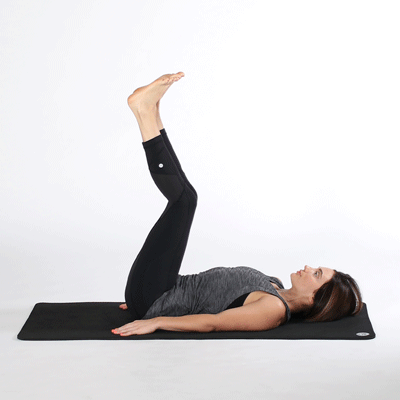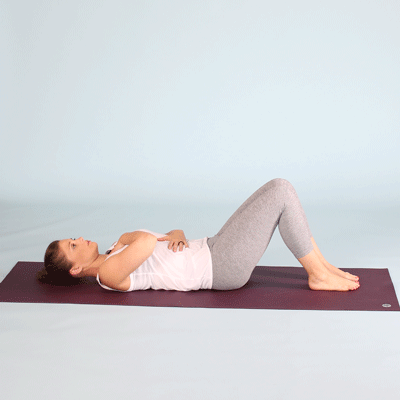Yoga poses like Seated Forward Bend and Bow Pose may help you manage diabetes when performed as part of a regular yoga practice. Yoga may also have benefits to your general health and heart health.
Yoga can do more than just relax your body in mind — especially if you’re living with diabetes. Practicing yoga
Regular practice may help reduce your risk of other complications of diabetes, such as heart disease.
Keep reading to learn how these simple moves can improve your overall quality of life and lead to significant transformations.
This restorative inversion allows for relaxation. Relaxation helps
Muscles worked:
- hamstrings
- pelvic muscles
- lower back
- front torso
- back of the neck
To do this:
- Fold up a blanket or towel to sit on.
- Sit with your right side against a wall.
- Swing your legs up along the wall as you move to lie flat on your back. Your body should form a 90-degree angle against the wall.
- Keep your sitting bones as close to the wall as possible.
- Relax your neck, chin, and throat.
- Stretch your arms out to the side with your palms facing up.
- Remain in this pose for 5–15 minutes.
- Release by slowly sliding your legs down to the side.
This is a restorative pose that may help calm your nervous system. This pose can also help reduce your stress levels, which may help lower blood pressure and blood sugar levels. It’s also thought to stimulate the abdominal organs, bladder, and kidneys.
Muscles worked:
- adductors
- groin muscles
- pelvic muscles
- psoas
To do this:
- While seated, bring the soles of your feet together. Your knees should be out to the sides.
- You may place a bolster underneath your knees for support.
- Slowly lean back until your back is flat on the floor.
- Relax the area around your hips.
- Rest your hands alongside your body with your palms facing up.
- You can also press down on your thighs to gently deepen the stretch in your legs and hips.
- Stay in this pose for up to 10 minutes.
- To release, use your hands to lift and press your knees together. Slowly sit all the way up.
This pose is a therapeutic forward bend. In addition to lowering blood pressure and promoting weight loss, it may help relieve anxiety, headache, and fatigue.
Muscles worked:
- pelvic muscles
- erector spinae
- gluteus maximus
- gastrocnemius
To do this:
- Sit on the edge of a folded blanket and extend your legs long.
- You may place a prop under your knees for support.
- Imagine that you’re pressing the soles of your feet against a wall so that your toes are drawing back toward your shins.
- Root into your sit bones, lengthen your spine, and open your heart center.
- Hinge at your hips as you bend forward.
- Walk your hands down to your feet, stopping when you reach a comfortable position. Your torso should fold into your legs.
- Tuck your chin into your chest.
- Remain in the pose for up to 3 minutes.
Some believe this inversion may help improve circulation, stimulate the thyroid gland, calm the mind, and relieve stress.
Muscles worked:
- rectus abdominis
- trapezius
- rotator cuff
- quadriceps
To do this:
- Lie down flat on your back with a folded blanket under your shoulders.
- Align your shoulders with the edge of the blanket.
- Rest your arms alongside your body with your palms facing down.
- Lift your legs straight up into the air.
- Slowly lower your legs back toward your head.
- Move your hands to your lower back for support. Your fingers should be facing upward.
- Raise your legs up so that your shoulders, spine, and hips are in one straight line.
- Remain in the pose for 30 seconds to 3 minutes.
- Release by rolling your spine back down to the mat and lowering your legs to the floor.
This inversion may help stimulate the thyroid gland, increase circulation, and reduce stress. It may also help relieve backache, headache, and insomnia as part of a regular yoga practice.
Muscles worked:
- rotator cuff
- hamstrings
- trapezius
- spinal extensors
You may find it easier to transition into a Plow Pose from a Supported Shoulderstand.
To do this:
- From Shoulderstand, bring your feet to the floor above your head.
- If your feet don’t reach the floor, use a pillow or block for support.
- Keep your hands on your lower back for added support.
- Remain in the pose for 1 to 5 minutes.
- To release, roll your spine back down to your mat and raise your legs up to form a 90-degree angle.
- Lower your legs back down to your mat.
This stimulating backbend requires a lot of muscular strength. The pose may help lower blood pressure, boost circulation, and promote weight loss. It may also help stimulate the abdominal organs.
Muscles worked:
- gluteus maximus
- triceps brachii
- spinal extensors
- quadriceps
- hamstrings
To do this:
- Lie on your stomach with your legs extended behind you.
- Place your palms flat on the floor. Your forearms should be perpendicular to the floor.
- Press into your palms to straighten your arms and lift up your body and legs.
- Come onto the tops of your feet.
- Keep a slight bend in your elbows as you engage your thigh, arm, and abdominal muscles.
- Maintain a firmness in your buttocks and shoulder blades.
- Keep your gaze straight ahead.
- Soften your throat and neck.
- Remain in this pose for up to 30 seconds.
This backbend opens up your chest and may help stimulate your abdominal organs. This may help support lower blood sugar levels, as well as relieve constipation and respiratory ailments.
Muscles worked:
- gluteus maximus
- hamstrings
- quadriceps
- pectoralis major
To do this:
- Lie down on your stomach.
- Allow your arms to rest alongside your body with your palms facing up.
- Bend your knees and bring your hands to the outside of your ankles.
- Lift up your head, chest, and knees.
- Breathe deeply and gaze forward.
- Remain in the pose for up to 30 seconds.
- On exhale, release the pose.
- Place one hand on top of the other to make a pillow for your forehead.
- Gently shake your hips from side to side to relax your lower back.
- Repeat this pose one or two times.
Twisting poses like this one may stimulate the abdominal organs, which
Muscles worked:
- rhomboids
- serratus anterior
- erector spinae
- pectoralis major
- psoas
To do this:
- While in a cross-legged position, scoot your right foot to the outside of your left hip.
- Cross your left leg over your right leg so that your left foot sits at the outside of your right thigh.
- Root into your sit bones and lengthen your spine.
- Twist your body to the left.
- Bring your left hand to the floor behind you.
- Bring your right upper arm to the outside of your left thigh. You can rest your hand on your thigh or keep your forearm lifted straight into the air.
- On each inhale, focus on lengthening and lifting.
- Twist a bit deeper to the right with each exhale.
- Bring your gaze to look over either shoulder.
- Hold this pose for up to 1 minute.
- Repeat on the other side.
This restorative twisting pose may help stimulate the abdominal organs, which may support digestion and lower blood sugar levels. The pose may also help relieve pain and stiffness in your spine, back, and hips.
Muscles worked:
- erector spinae
- rectus abdominis
- trapezius
- pectoralis major
To do this:
- Lie flat on your back and bring your knees into your chest.
- Extend your arms to your sides with your palms facing down.
- Bring your knees over to the left side.
- Try to keep your knees together and at hip level.
- If you’d like, use your left hand to apply gentle pressure to your knees.
- Your gaze can be in any direction.
- Remain in this pose for at least 30 seconds.
- Repeat on the opposite side.
This resting pose encourages relaxation, which may have a beneficial effect on blood sugar and general health. It may also help relieve back and neck pain, stress, and fatigue.
Muscles worked:
- gluteus maximus
- rotator muscles
- hamstrings
- spinal extensors
To do this:
- While in a kneeling position, make sure your knees are hip-width apart.
- Sink back to bring your buttocks to your heels.
- You may place a cushion between your thighs and calves for support.
- Lean forward to rest your forehead on the floor.
- Extend your arms in front of you, or allow your arms to rest alongside your body with your palms facing up.
- Remain in this pose for up to 5 minutes.
- Release by lifting yourself up into a seated position.
This restorative pose
To do this:
- Lie flat on your back, with your feet spread out a little wider than your hips.
- Rest your arms alongside your torso with your palms facing up.
- Align your torso so that it’s in a straight line. Your body should form a Y shape.
- Allow your body to press into the floor. Completely relax your body and release any tension you’re holding.
- Remain in this pose for 10–20 minutes.
The results of a 2016 review of 25 controlled trials found that yoga practices can significantly help manage type 2 diabetes. Researchers concluded that yoga improved blood sugar levels, lipid levels, and body composition.
Limited data found during the review also suggests that yoga can lower oxidative stress and blood pressure. Other data suggests that yoga
Although these results are promising, more research is needed to confirm and expand upon these findings.
Practicing yoga regularly can help improve your overall well-being and may help manage diabetes.
If you’re new to yoga, talk with a healthcare professional before adding this exercise to your routine. They can walk you through any potential risks and offer guidance on how to establish and maintain a healthy lifestyle. They may recommend practicing yoga under the guidance of a certified instructor to avoid injury.
If you prefer to practice at home, you can use books, articles, and guided online classes to develop your practice. Begin with a short practice of 10 minutes per day, and work your way up from there.
You can also take classes at a studio. Be sure to discuss your condition and intentions with your teacher so that they can develop a practice suited to your needs.


